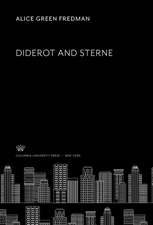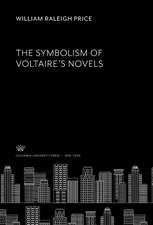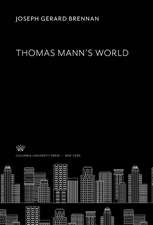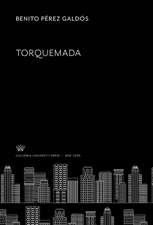Transformers for Machine Learning: A Deep Dive: Chapman & Hall/CRC Machine Learning & Pattern Recognition
Autor Uday Kamath, Kenneth Graham, Wael Emaraen Limba Engleză Paperback – 25 mai 2022
Key Features:
- A comprehensive reference book for detailed explanations for every algorithm and techniques related to the transformers.
- 60+ transformer architectures covered in a comprehensive manner.
- A book for understanding how to apply the transformer techniques in speech, text, time series, and computer vision.
- Practical tips and tricks for each architecture and how to use it in the real world.
- Hands-on case studies and code snippets for theory and practical real-world analysis using the tools and libraries, all ready to run in Google Colab.
| Toate formatele și edițiile | Preț | Express |
|---|---|---|
| Paperback (1) | 298.44 lei 22-36 zile | +17.38 lei 6-12 zile |
| CRC Press – 25 mai 2022 | 298.44 lei 22-36 zile | +17.38 lei 6-12 zile |
| Hardback (1) | 820.06 lei 43-57 zile | |
| CRC Press – 25 mai 2022 | 820.06 lei 43-57 zile |
Din seria Chapman & Hall/CRC Machine Learning & Pattern Recognition
-
 Preț: 313.05 lei
Preț: 313.05 lei - 9%
 Preț: 617.55 lei
Preț: 617.55 lei - 20%
 Preț: 495.84 lei
Preț: 495.84 lei -
 Preț: 353.69 lei
Preț: 353.69 lei -
 Preț: 357.34 lei
Preț: 357.34 lei - 20%
 Preț: 921.43 lei
Preț: 921.43 lei - 8%
 Preț: 410.54 lei
Preț: 410.54 lei - 31%
 Preț: 591.54 lei
Preț: 591.54 lei -
 Preț: 422.59 lei
Preț: 422.59 lei - 27%
 Preț: 263.50 lei
Preț: 263.50 lei - 18%
 Preț: 785.60 lei
Preț: 785.60 lei - 27%
 Preț: 259.81 lei
Preț: 259.81 lei - 43%
 Preț: 266.41 lei
Preț: 266.41 lei - 26%
 Preț: 272.02 lei
Preț: 272.02 lei - 15%
 Preț: 451.34 lei
Preț: 451.34 lei - 30%
 Preț: 264.66 lei
Preț: 264.66 lei - 15%
 Preț: 659.54 lei
Preț: 659.54 lei - 20%
 Preț: 677.75 lei
Preț: 677.75 lei - 20%
 Preț: 392.39 lei
Preț: 392.39 lei - 12%
 Preț: 299.89 lei
Preț: 299.89 lei - 30%
 Preț: 436.01 lei
Preț: 436.01 lei
Preț: 298.44 lei
Preț vechi: 373.05 lei
-20% Nou
Puncte Express: 448
Preț estimativ în valută:
57.12€ • 59.47$ • 48.27£
57.12€ • 59.47$ • 48.27£
Carte disponibilă
Livrare economică 17 februarie-03 martie
Livrare express 01-07 februarie pentru 27.37 lei
Preluare comenzi: 021 569.72.76
Specificații
ISBN-13: 9780367767341
ISBN-10: 0367767341
Pagini: 283
Ilustrații: 11 Tables, black and white; 13 Line drawings, color; 75 Line drawings, black and white; 13 Illustrations, color; 75 Illustrations, black and white
Dimensiuni: 156 x 234 x 27 mm
Greutate: 0.4 kg
Ediția:1
Editura: CRC Press
Colecția Chapman and Hall/CRC
Seria Chapman & Hall/CRC Machine Learning & Pattern Recognition
Locul publicării:Boca Raton, United States
ISBN-10: 0367767341
Pagini: 283
Ilustrații: 11 Tables, black and white; 13 Line drawings, color; 75 Line drawings, black and white; 13 Illustrations, color; 75 Illustrations, black and white
Dimensiuni: 156 x 234 x 27 mm
Greutate: 0.4 kg
Ediția:1
Editura: CRC Press
Colecția Chapman and Hall/CRC
Seria Chapman & Hall/CRC Machine Learning & Pattern Recognition
Locul publicării:Boca Raton, United States
Public țintă
Academic, Postgraduate, Professional, and Professional Practice & DevelopmentCuprins
List of Figures
List of Tables
Author Bios
Foreword
Preface
Contributors
Deep Learning and Transformers: An Introduction
1.1 DEEP LEARNING: A HISTORIC PERSPECTIVE
1.2 TRANSFORMERS AND TAXONOMY
1.2.1 Modified Transformer Architecture
1.2.1.1 Transformer block changes
1.2.1.2 Transformer sublayer changes
1.2.2 Pretraining Methods and Applications
1.3 RESOURCES
1.3.1 Libraries and Implementations
1.3.2 Books
1.3.3 Courses, Tutorials, and Lectures
1.3.4 Case Studies and Details
Transformers: Basics and Introduction
2.1 ENCODER-DECODER ARCHITECTURE
2.2 SEQUENCE TO SEQUENCE
2.2.1 Encoder
2.2.2 Decoder
2.2.3 Training
2.2.4 Issues with RNN-based Encoder Decoder
2.3 ATTENTION MECHANISM
2.3.1 Background
2.3.2 Types of Score-Based Attention
2.3.2.1 Dot Product (multiplicative)
2.3.2.2 Scaled Dot Product or multiplicative
2.3.2.3 Linear, MLP, or additive
2.3.3 Attention-based Sequence to Sequence
2.4 TRANSFORMER
2.4.1 Source and Target Representation
2.4.1.1 Word Embedding
2.4.1.2 Positional Encoding
2.4.2 Attention Layers
2.4.2.1 Self-Attention
2.4.2.2 Multi-Head Attention
2.4.2.3 Masked Multi-Head Attention
2.4.2.4 Encoder-Decoder Multi-Head Attention
2.4.3 Residuals and Layer Normalization
2.4.4 Position-wise Feed-Forward Networks
2.4.5 Encoder
2.4.6 Decoder
2.5 CASE STUDY: MACHINE TRANSLATION
2.5.1 Goal
2.5.2 Data, Tools and Libraries
2.5.3 Experiments, Results and Analysis
2.5.3.1 Exploratory Data Analysis
2.5.3.2 Attention
2.5.3.3 Transformer
2.5.3.4 Results and Analysis
2.5.3.5 Explainability
Bidirectional Encoder Representations from Transformers (BERT)
3.1 BERT
3.1.1 Architecture
3.1.2 Pre-training
3.1.3 Fine-tuning
3.2 BERT VARIANTS
3.2.1 RoBERTa
3.3 APPLICATIONS
3.3.1 TaBERT
3.3.2 BERTopic
3.4 BERT INSIGHTS
3.4.1 BERT Sentence Representation
3.4.2 BERTology
3.5 CASE STUDY: TOPIC MODELING WITH TRANSFORMERS
3.5.1 Goal
3.5.2 Data, Tools, and Libraries
3.5.2.1 Data
3.5.2.2 Compute embeddings
3.5.3 Experiments, Results, and Analysis
3.5.3.1 Building Topics
3.5.3.2 Topic size distribution
3.5.3.3 Visualization of topics
3.5.3.4 Content of topics
3.6 CASE STUDY: FINE-TUNING BERT
3.6.1 Goal
3.6.2 Data, Tools and Libraries
3.6.3 Experiments, Results and Analysis
Multilingual Transformer Architectures
4.1 MULTILINGUAL TRANSFORMER ARCHITECTURES
4.1.1 Basic Multilingual Transformer
4.1.2 Single-Encoder Multilingual NLU
4.1.2.1 mBERT
4.1.2.2 XLM
4.1.2.3 XLM-RoBERTa
4.1.2.4 ALM
4.1.2.5 Unicoder
4.1.2.6 INFOXL
4.1.2.7 AMBER
4.1.2.8 ERNIE-M
4.1.2.9 HITCL
4.1.3 Dual-Encoder Multilingual NLU
4.1.3.1 LaBSE
4.1.3.2 mUSE
4.1.4 Multilingual NLG
4.2 MULTILINGUAL DATA
4.2.1 Pre-training Data
4.2.2 Multilingual Benchmarks
4.2.2.1 Classification
4.2.2.2 Structure Prediction
4.2.2.3 Question Answering
4.2.2.4 Semantic Retrieval
4.3 MULTILINGUAL TRANSFER LEARNING INSIGHTS
4.3.1 Zero-shot Cross-lingual Learning
4.3.1.1 Data Factors
4.3.1.2 Model Architecture Factors
4.3.1.3 Model Tasks Factors
4.3.2 Language-agnostic Cross-lingual Representations
4.4 CASE STUDY
4.4.1 Goal
4.4.2 Data, Tools, and Libraries
4.4.3 Experiments, Results, and Analysis
4.4.3.1 Data Preprocessing
4.4.3.2 Experiments
Transformer Modifications
5.1 TRANSFORMER BLOCK MODIFICATIONS
5.1.1 Lightweight Transformers
5.1.1.1 Funnel-Transformer
5.1.1.2 DeLighT
5.1.2 Connections between Transformer Blocks
5.1.2.1 RealFormer
5.1.3 Adaptive Computation Time
5.1.3.1 Universal Transformers (UT)
5.1.4 Recurrence Relations between Transformer Blocks
5.1.4.1 Transformer-XL
5.1.5 Hierarchical Transformers
5.2 TRANSFORMERS WITH MODIFIED MULTI-HEAD SELF-ATTENTION
5.2.1 Structure of Multi-head Self-Attention
5.2.1.1 Multi-head self-attention
5.2.1.2 Space and time complexity
5.2.2 Reducing Complexity of Self-attention
5.2.2.1 Longformer
5.2.2.2 Reformer
5.2.2.3 Performer
5.2.2.4 Big Bird
5.2.3 Improving Multi-head-attention
5.2.3.1 Talking-Heads Attention
5.2.4 Biasing Attention with Priors
5.2.5 Prototype Queries
5.2.5.1 Clustered Attention
5.2.6 Compressed Key-Value Memory
5.2.6.1 Luna: Linear Unified Nested Attention
5.2.7 Low-rank Approximations
5.2.7.1 Linformer
5.3 MODIFICATIONS FOR TRAINING TASK EFFICIENCY
5.3.1 ELECTRA
5.3.1.1 Replaced token detection
5.3.2 T5
5.4 TRANSFORMER SUBMODULE CHANGES
5.4.1 Switch Transformer
5.5 CASE STUDY: SENTIMENT ANALYSIS
5.5.1 Goal
5.5.2 Data, Tools, and Libraries
5.5.3 Experiments, Results, and Analysis
5.5.3.1 Visualizing attention head weights
5.5.3.2 Analysis
Pretrained and Application-Specific Transformers
6.1 TEXT PROCESSING
6.1.1 Domain-Specific Transformers
6.1.1.1 BioBERT
6.1.1.2 SciBERT
6.1.1.3 FinBERT
6.1.2 Text-to-text Transformers
6.1.2.1 ByT5
6.1.3 Text generation
6.1.3.1 GPT: Generative Pre-training
6.1.3.2 GPT-2
6.1.3.3 GPT-3
6.2 COMPUTER VISION
6.2.1 Vision Transformer
6.3 AUTOMATIC SPEECH RECOGNITION
6.3.1 Wav2vec 2.0
6.3.2 Speech2Text2
6.3.3 HuBERT: Hidden Units BERT
6.4 MULTIMODAL AND MULTITASKING TRANSFORMER
6.4.1 Vision-and-Language BERT (VilBERT)
6.4.2 Unified Transformer (UniT)
6.5 VIDEO PROCESSING WITH TIMESFORMER
6.5.1 Patch embeddings
6.5.2 Self-attention
6.5.2.1 Spatiotemporal self-attention
6.5.2.2 Spatiotemporal attention blocks
6.6 GRAPH TRANSFORMERS
6.6.1 Positional encodings in a graph
6.6.1.1 Laplacian positional encodings
6.6.2 Graph transformer input
6.6.2.1 Graphs without edge attributes
6.6.2.2 Graphs with edge attributes
6.7 REINFORCEMENT LEARNING
6.7.1 Decision Transformer
6.8 CASE STUDY: AUTOMATIC SPEECH RECOGNITION
6.8.1 Goal
6.8.2 Data, Tools, and Libraries
6.8.3 Experiments, Results, and Analysis
6.8.3.1 Preprocessing speech data
6.8.3.2 Evaluation
Interpretability and Explainability Techniques for Transformers
7.1 TRAITS OF EXPLAINABLE SYSTEMS
7.2 RELATED AREAS THAT IMPACT EXPLAINABILITY
7.3 EXPLAINABLE METHODS TAXONOMY
7.3.1 Visualization Methods
7.3.1.1 Backpropagation-based
7.3.1.2 Perturbation-based
7.3.2 Model Distillation
7.3.2.1 Local Approximation
7.3.2.2 Model Translation
7.3.3 Intrinsic Methods
7.3.3.1 Probing Mechanism
7.3.3.2 Joint Training
7.4 ATTENTION AND EXPLANATION
7.4.1 Attention is not Explanation
7.4.1.1 Attention Weights and Feature Importance
7.4.1.2 Counterfactual Experiments
7.4.2 Attention is not not Explanation
7.4.2.1 Is attention necessary for all tasks?
7.4.2.2 Searching for Adversarial Models
7.4.2.3 Attention Probing
7.5 QUANTIFYING ATTENTION FLOW
7.5.1 Information flow as DAG
7.5.2 Attention Rollout
7.5.3 Attention Flow
7.6 CASE STUDY: TEXT CLASSIFICATION WITH EXPLAINABILITY
7.6.1 Goal
7.6.2 Data, Tools, and Libraries
7.6.3 Experiments, Results and Analysis
7.6.3.1 Exploratory Data Analysis
7.6.3.2 Experiments
7.6.3.3 Error Analysis and Explainability
Bibliography
Alphabetical Index
List of Tables
Author Bios
Foreword
Preface
Contributors
Deep Learning and Transformers: An Introduction
1.1 DEEP LEARNING: A HISTORIC PERSPECTIVE
1.2 TRANSFORMERS AND TAXONOMY
1.2.1 Modified Transformer Architecture
1.2.1.1 Transformer block changes
1.2.1.2 Transformer sublayer changes
1.2.2 Pretraining Methods and Applications
1.3 RESOURCES
1.3.1 Libraries and Implementations
1.3.2 Books
1.3.3 Courses, Tutorials, and Lectures
1.3.4 Case Studies and Details
Transformers: Basics and Introduction
2.1 ENCODER-DECODER ARCHITECTURE
2.2 SEQUENCE TO SEQUENCE
2.2.1 Encoder
2.2.2 Decoder
2.2.3 Training
2.2.4 Issues with RNN-based Encoder Decoder
2.3 ATTENTION MECHANISM
2.3.1 Background
2.3.2 Types of Score-Based Attention
2.3.2.1 Dot Product (multiplicative)
2.3.2.2 Scaled Dot Product or multiplicative
2.3.2.3 Linear, MLP, or additive
2.3.3 Attention-based Sequence to Sequence
2.4 TRANSFORMER
2.4.1 Source and Target Representation
2.4.1.1 Word Embedding
2.4.1.2 Positional Encoding
2.4.2 Attention Layers
2.4.2.1 Self-Attention
2.4.2.2 Multi-Head Attention
2.4.2.3 Masked Multi-Head Attention
2.4.2.4 Encoder-Decoder Multi-Head Attention
2.4.3 Residuals and Layer Normalization
2.4.4 Position-wise Feed-Forward Networks
2.4.5 Encoder
2.4.6 Decoder
2.5 CASE STUDY: MACHINE TRANSLATION
2.5.1 Goal
2.5.2 Data, Tools and Libraries
2.5.3 Experiments, Results and Analysis
2.5.3.1 Exploratory Data Analysis
2.5.3.2 Attention
2.5.3.3 Transformer
2.5.3.4 Results and Analysis
2.5.3.5 Explainability
Bidirectional Encoder Representations from Transformers (BERT)
3.1 BERT
3.1.1 Architecture
3.1.2 Pre-training
3.1.3 Fine-tuning
3.2 BERT VARIANTS
3.2.1 RoBERTa
3.3 APPLICATIONS
3.3.1 TaBERT
3.3.2 BERTopic
3.4 BERT INSIGHTS
3.4.1 BERT Sentence Representation
3.4.2 BERTology
3.5 CASE STUDY: TOPIC MODELING WITH TRANSFORMERS
3.5.1 Goal
3.5.2 Data, Tools, and Libraries
3.5.2.1 Data
3.5.2.2 Compute embeddings
3.5.3 Experiments, Results, and Analysis
3.5.3.1 Building Topics
3.5.3.2 Topic size distribution
3.5.3.3 Visualization of topics
3.5.3.4 Content of topics
3.6 CASE STUDY: FINE-TUNING BERT
3.6.1 Goal
3.6.2 Data, Tools and Libraries
3.6.3 Experiments, Results and Analysis
Multilingual Transformer Architectures
4.1 MULTILINGUAL TRANSFORMER ARCHITECTURES
4.1.1 Basic Multilingual Transformer
4.1.2 Single-Encoder Multilingual NLU
4.1.2.1 mBERT
4.1.2.2 XLM
4.1.2.3 XLM-RoBERTa
4.1.2.4 ALM
4.1.2.5 Unicoder
4.1.2.6 INFOXL
4.1.2.7 AMBER
4.1.2.8 ERNIE-M
4.1.2.9 HITCL
4.1.3 Dual-Encoder Multilingual NLU
4.1.3.1 LaBSE
4.1.3.2 mUSE
4.1.4 Multilingual NLG
4.2 MULTILINGUAL DATA
4.2.1 Pre-training Data
4.2.2 Multilingual Benchmarks
4.2.2.1 Classification
4.2.2.2 Structure Prediction
4.2.2.3 Question Answering
4.2.2.4 Semantic Retrieval
4.3 MULTILINGUAL TRANSFER LEARNING INSIGHTS
4.3.1 Zero-shot Cross-lingual Learning
4.3.1.1 Data Factors
4.3.1.2 Model Architecture Factors
4.3.1.3 Model Tasks Factors
4.3.2 Language-agnostic Cross-lingual Representations
4.4 CASE STUDY
4.4.1 Goal
4.4.2 Data, Tools, and Libraries
4.4.3 Experiments, Results, and Analysis
4.4.3.1 Data Preprocessing
4.4.3.2 Experiments
Transformer Modifications
5.1 TRANSFORMER BLOCK MODIFICATIONS
5.1.1 Lightweight Transformers
5.1.1.1 Funnel-Transformer
5.1.1.2 DeLighT
5.1.2 Connections between Transformer Blocks
5.1.2.1 RealFormer
5.1.3 Adaptive Computation Time
5.1.3.1 Universal Transformers (UT)
5.1.4 Recurrence Relations between Transformer Blocks
5.1.4.1 Transformer-XL
5.1.5 Hierarchical Transformers
5.2 TRANSFORMERS WITH MODIFIED MULTI-HEAD SELF-ATTENTION
5.2.1 Structure of Multi-head Self-Attention
5.2.1.1 Multi-head self-attention
5.2.1.2 Space and time complexity
5.2.2 Reducing Complexity of Self-attention
5.2.2.1 Longformer
5.2.2.2 Reformer
5.2.2.3 Performer
5.2.2.4 Big Bird
5.2.3 Improving Multi-head-attention
5.2.3.1 Talking-Heads Attention
5.2.4 Biasing Attention with Priors
5.2.5 Prototype Queries
5.2.5.1 Clustered Attention
5.2.6 Compressed Key-Value Memory
5.2.6.1 Luna: Linear Unified Nested Attention
5.2.7 Low-rank Approximations
5.2.7.1 Linformer
5.3 MODIFICATIONS FOR TRAINING TASK EFFICIENCY
5.3.1 ELECTRA
5.3.1.1 Replaced token detection
5.3.2 T5
5.4 TRANSFORMER SUBMODULE CHANGES
5.4.1 Switch Transformer
5.5 CASE STUDY: SENTIMENT ANALYSIS
5.5.1 Goal
5.5.2 Data, Tools, and Libraries
5.5.3 Experiments, Results, and Analysis
5.5.3.1 Visualizing attention head weights
5.5.3.2 Analysis
Pretrained and Application-Specific Transformers
6.1 TEXT PROCESSING
6.1.1 Domain-Specific Transformers
6.1.1.1 BioBERT
6.1.1.2 SciBERT
6.1.1.3 FinBERT
6.1.2 Text-to-text Transformers
6.1.2.1 ByT5
6.1.3 Text generation
6.1.3.1 GPT: Generative Pre-training
6.1.3.2 GPT-2
6.1.3.3 GPT-3
6.2 COMPUTER VISION
6.2.1 Vision Transformer
6.3 AUTOMATIC SPEECH RECOGNITION
6.3.1 Wav2vec 2.0
6.3.2 Speech2Text2
6.3.3 HuBERT: Hidden Units BERT
6.4 MULTIMODAL AND MULTITASKING TRANSFORMER
6.4.1 Vision-and-Language BERT (VilBERT)
6.4.2 Unified Transformer (UniT)
6.5 VIDEO PROCESSING WITH TIMESFORMER
6.5.1 Patch embeddings
6.5.2 Self-attention
6.5.2.1 Spatiotemporal self-attention
6.5.2.2 Spatiotemporal attention blocks
6.6 GRAPH TRANSFORMERS
6.6.1 Positional encodings in a graph
6.6.1.1 Laplacian positional encodings
6.6.2 Graph transformer input
6.6.2.1 Graphs without edge attributes
6.6.2.2 Graphs with edge attributes
6.7 REINFORCEMENT LEARNING
6.7.1 Decision Transformer
6.8 CASE STUDY: AUTOMATIC SPEECH RECOGNITION
6.8.1 Goal
6.8.2 Data, Tools, and Libraries
6.8.3 Experiments, Results, and Analysis
6.8.3.1 Preprocessing speech data
6.8.3.2 Evaluation
Interpretability and Explainability Techniques for Transformers
7.1 TRAITS OF EXPLAINABLE SYSTEMS
7.2 RELATED AREAS THAT IMPACT EXPLAINABILITY
7.3 EXPLAINABLE METHODS TAXONOMY
7.3.1 Visualization Methods
7.3.1.1 Backpropagation-based
7.3.1.2 Perturbation-based
7.3.2 Model Distillation
7.3.2.1 Local Approximation
7.3.2.2 Model Translation
7.3.3 Intrinsic Methods
7.3.3.1 Probing Mechanism
7.3.3.2 Joint Training
7.4 ATTENTION AND EXPLANATION
7.4.1 Attention is not Explanation
7.4.1.1 Attention Weights and Feature Importance
7.4.1.2 Counterfactual Experiments
7.4.2 Attention is not not Explanation
7.4.2.1 Is attention necessary for all tasks?
7.4.2.2 Searching for Adversarial Models
7.4.2.3 Attention Probing
7.5 QUANTIFYING ATTENTION FLOW
7.5.1 Information flow as DAG
7.5.2 Attention Rollout
7.5.3 Attention Flow
7.6 CASE STUDY: TEXT CLASSIFICATION WITH EXPLAINABILITY
7.6.1 Goal
7.6.2 Data, Tools, and Libraries
7.6.3 Experiments, Results and Analysis
7.6.3.1 Exploratory Data Analysis
7.6.3.2 Experiments
7.6.3.3 Error Analysis and Explainability
Bibliography
Alphabetical Index
Notă biografică
Uday Kamath has spent more than two decades developing analytics products and combines this experience with learning in statistics, optimization, machine learning, bioinformatics, and evolutionary computing. Uday has contributed to many journals, conferences, and books, is the author of books like XAI: An Introduction to Interpretable XAI, Deep Learning for NLP and Speech Recognition, Mastering Java Machine Learning, and Machine Learning: End-to-End guide for Java developers. He held many senior roles: Chief Analytics Officer for Digital Reasoning, Advisor for
Falkonry, and Chief Data Scientist for BAE Systems Applied Intelligence. Uday has many patents and has built commercial products using AI in domains such as compliance, cybersecurity, financial crime, and bioinformatics. Uday currently works as the Chief Analytics Officer for Smarsh. He is responsible for data science, research of analytical products employing deep learning, transformers, explainable AI, and modern techniques in speech and text for the financial domain and healthcare.
Wael Emara has two decades of experience in academia and industry. Wael has a PhD in Computer Engineering and Computer Science with emphasis on machine learning and artificial intelligence. His technical background and research spans signal and image processing, computer vision, medical imaging, social media analytics, machine learning, and natural language processing. Wael has 10 research publications in various machine learning topics and he is active in the technical community in the greater New York area. Wael currently works as a Senior Research Engineer for Digital Reasoning where he is doing research on state-of-the-art artificial intelligence NLP systems.
Kenneth L. Graham has two decades experience solving quantitative problems in multiple domains, including Monte Carlo simulation, NLP, anomaly detection, cybersecurity, and behavioral profiling. For the past nine years, he has focused on building scalable solutions in NLP for government and industry, including entity coreference resolution, text classification, active learning, and temporal normalization. Kenneth currently works at Smarsh as a Principal Research Engineer, researching how to move state-of the-art NLP methods out of research and into production. Kenneth has five patents for his work in natural language processing, seven research publications, and a Ph.D. in Condensed Matter Physics.
Falkonry, and Chief Data Scientist for BAE Systems Applied Intelligence. Uday has many patents and has built commercial products using AI in domains such as compliance, cybersecurity, financial crime, and bioinformatics. Uday currently works as the Chief Analytics Officer for Smarsh. He is responsible for data science, research of analytical products employing deep learning, transformers, explainable AI, and modern techniques in speech and text for the financial domain and healthcare.
Wael Emara has two decades of experience in academia and industry. Wael has a PhD in Computer Engineering and Computer Science with emphasis on machine learning and artificial intelligence. His technical background and research spans signal and image processing, computer vision, medical imaging, social media analytics, machine learning, and natural language processing. Wael has 10 research publications in various machine learning topics and he is active in the technical community in the greater New York area. Wael currently works as a Senior Research Engineer for Digital Reasoning where he is doing research on state-of-the-art artificial intelligence NLP systems.
Kenneth L. Graham has two decades experience solving quantitative problems in multiple domains, including Monte Carlo simulation, NLP, anomaly detection, cybersecurity, and behavioral profiling. For the past nine years, he has focused on building scalable solutions in NLP for government and industry, including entity coreference resolution, text classification, active learning, and temporal normalization. Kenneth currently works at Smarsh as a Principal Research Engineer, researching how to move state-of the-art NLP methods out of research and into production. Kenneth has five patents for his work in natural language processing, seven research publications, and a Ph.D. in Condensed Matter Physics.
Descriere
Transformers are becoming a core part of many neural network architectures, employed in a wide range of applications such as NLP, Speech Recognition, Time Series, and Computer Vision. Transformers have gone through many adaptations and alterations, resulting in newer techniques and methods. This is the first comprehensive book on transformers.













